Miyazaki Prefecture
Kyushu is Japan’s southernmost “main” island and offers a wide range of birding opportunities. Miyazaki Prefecture extends down the southeast coast of the island and inland towards the Kirishima volcanic range of mountains.
Here you will find information on:
- Cape Hyuga
- Hitotsusegawa
- Miike
Cape Hyuga 日向岬
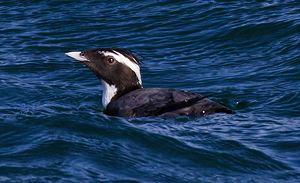 The rocky coastline to the east and south of Hyuga City is a good place to look for Japanese Murrelet, and they can often be seen in the bay near a small island in Hososhima Town. The area is reached by taking the road signposted to Cape Hyuga (Hyuga-misaki).
The rocky coastline to the east and south of Hyuga City is a good place to look for Japanese Murrelet, and they can often be seen in the bay near a small island in Hososhima Town. The area is reached by taking the road signposted to Cape Hyuga (Hyuga-misaki).
At the top, near the lighthouse, there is a car park, and beside it the Umagase Tea House and Cafe (32.422911, 131.684154). From here, a well-maintained trail passes through laurel forest as far as the headland (about a 20-minute walk) to Kuroda no Kashin (32.424688, 131.680552.) Right at the tip it is possible to look down onto the sea and with the aid of a telescope the small murrelets can often be seen flying by or floating on the water.
There is a shelter and some benches just before the tip of the cape making it a good place to have a picnic on a fine day as the view over the sea is magnificent. On the way, you will pass an interesting geological formation of columnar basalt, created when lava cooled quickly and hardened into vertical pillars.
About 1 km downhill from Umagase Tea House, as you head toward Hyuga town centre, is Kuroda no Kashin. This is a small tree-covered island on which can be found a Shinto shrine dedicated to Kuroda Yoshitaka — a daimyo who lived in the late 1500s. The island is reached from the car park (Map: 32.423785, 131.680975) by walking across a narrow 50 m-wide sandbar (at low tide only).
From this island (or from the car park), you can search with a telescope for murrelets as they feed close inshore, especially in rough weather when the waters of the bay are calmer.
Another location to look for Japanese Murrelet is in Kadogawa Harbour, on the north side of Hyuga City. Park by the boat yard at the north end of the harbour, then walk out to the "elbow" of the dog-leg shaped concrete breakwater and use a telescope to scan the bay in front of you or the harbour behind you.
The murrelets breed on nearby Birojima and late winter and early spring is the best time to see them when they return to the area to breed. With an advance reservation, it is possible to charter a fishing boat to go out into the harbour or just beyond to look for them.
While at Hososhima and also atop Cape Hyuga keep a look out for Japanese Wood Pigeon, as they are in the area. Other birds include the ubiquitous Black-eared Kite as well as Temminck's Cormorant, Western Osprey, Pacific Reef Egret and Little Egret, lots of Pale Thrush and Daurian Redstart during the winter, and a healthy population of the now established Red-billed Leiothrix.
If you fancy a local delicacy on the way back, treat yourself to a soft ice cream flavoured with locally grown lime-like citrus called Hebesu.
Further Information
Boats:
According to Kadogawa Town Tourist Information Office (Tel: 0982-57-4110) four boats operate out of Kadogawa Harbour for birdwatching or fishing trips.
Try contacting Kurogi-san of the Otojima-maru 乙島丸 (Tel: 090-2583-4574 (Japanese only)) for a reservation. Reservation is required and the trip costs about ¥4,000 per person.
Accommodation:
There are several places to stay in and around Hyuga. There are reasonably priced business inns near Hyuga Station (about a 15-minute drive from Kadogawa Harbour) and Family Lodge Hatago-ya (Tel: 0982-63-8858) is located beside the bay about a 10-minute walk north of the harbour. Prices start at ¥4,000 for a single, ¥7,000 for a twin room.
Hitotsusegawa River Mouth 宮崎県一ツ瀬川河口
Map: 32.041377, 131.502100
During winter, the Hitotsusegawa Estuary, located to the north of Miyazaki City, is a good place to look for Black-faced Spoonbill as well as various shorebirds and egrets. Offshore there is a good chance of seeing Japanese Murrelet if the sea is calm.
Eastern Blue Rock Thrush is reasonably common here, as is Pacific Reef Heron. Overhead, watch for Asian House Martin and mixed flocks of Barn Swallow and Red-rumped Swallow.
Miike 御池
Map: 31.884559, 130.970081
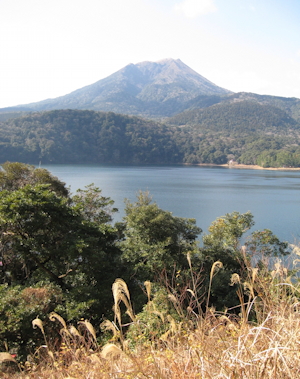 About an hour's drive from Kagoshima Airport in southern Kyushu lies Miike, one of the island's better known birding spots. This lake on the flank of Mt Takachihomine (1,573 m), and on the border with Kagoshima Prefecture, is a picturesque crater lake — said to be the deepest crater lake in Japan — surrounded by mature natural forest.
About an hour's drive from Kagoshima Airport in southern Kyushu lies Miike, one of the island's better known birding spots. This lake on the flank of Mt Takachihomine (1,573 m), and on the border with Kagoshima Prefecture, is a picturesque crater lake — said to be the deepest crater lake in Japan — surrounded by mature natural forest.
There are various interesting forest trails here suitable for birdwatching, thoiugh at the moment the one that loops around the circumference of the lake is only partially accessible because of typhoon-related damage.
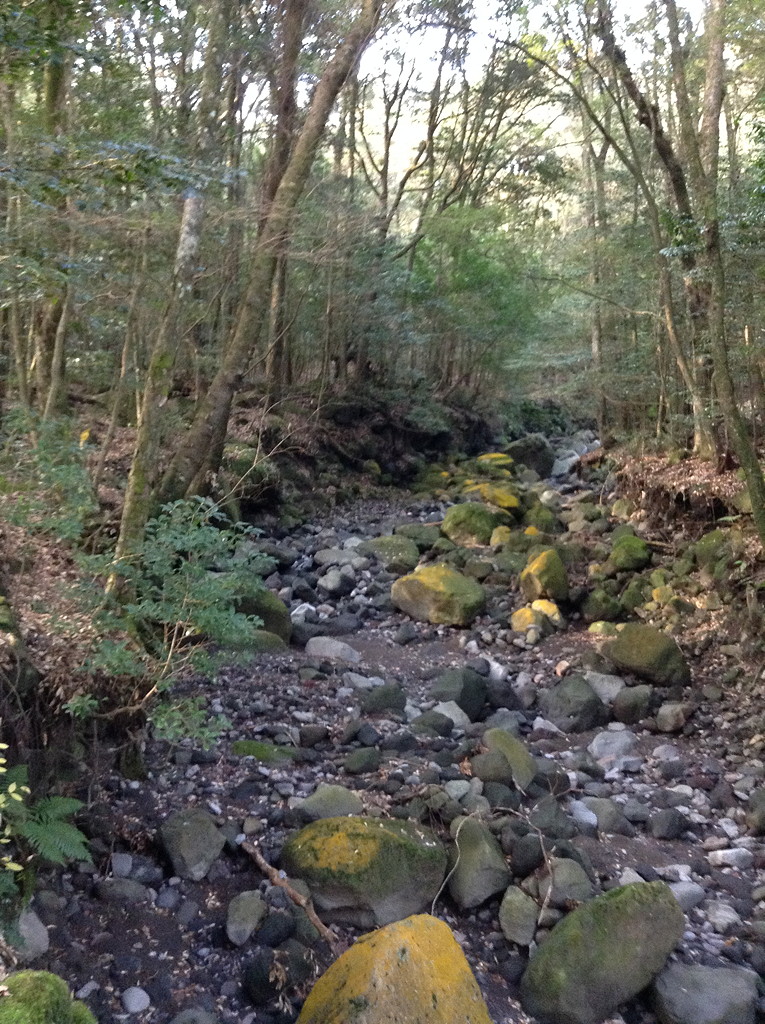 The surrounding forest is home to most of the resident species of southwestern Kyushu including Japanese Woodpecker and Ryukyu Minivet, and in winter it can be a good location to look for Elegant Bunting. Three species of woodpecker occur here: (Japanese Green Woodpecker, White-backed Woodpecker, and Japanese Pygmy Woodpecker) and many other forest species. The interesting white-rumped ijimae race of the resident Copper Pheasant is here, but elusive. In the past, Miike was a regular site for the scarce summer visiting Fairy Pitta. Unfortunately, the over-zealous attentions of amateur photographers may have driven these away, their numbers have been much reduced in recent years and now they are hard birds to find in the area. Nevertheless it is worth listening for them from May onwards.
The surrounding forest is home to most of the resident species of southwestern Kyushu including Japanese Woodpecker and Ryukyu Minivet, and in winter it can be a good location to look for Elegant Bunting. Three species of woodpecker occur here: (Japanese Green Woodpecker, White-backed Woodpecker, and Japanese Pygmy Woodpecker) and many other forest species. The interesting white-rumped ijimae race of the resident Copper Pheasant is here, but elusive. In the past, Miike was a regular site for the scarce summer visiting Fairy Pitta. Unfortunately, the over-zealous attentions of amateur photographers may have driven these away, their numbers have been much reduced in recent years and now they are hard birds to find in the area. Nevertheless it is worth listening for them from May onwards.
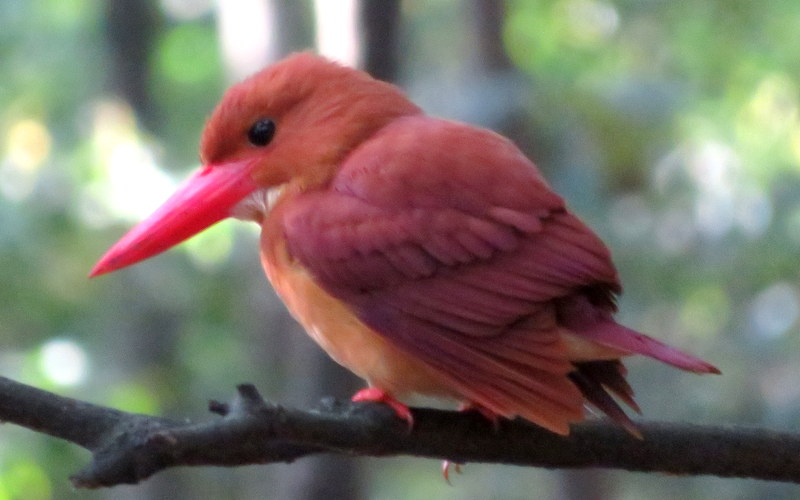 Early on summer mornings the call of Ruddy Kingfisher echoes through the forest, and the mournful whistled song of the White-bellied Green Pigeon can be heard. Among the breeding species are Blue-and-white Flycatcher, Narcissus Flycatcher and Japanese Paradise Flycatcher, Eurasian Nuthatch and Eurasian Treecreeper.
Early on summer mornings the call of Ruddy Kingfisher echoes through the forest, and the mournful whistled song of the White-bellied Green Pigeon can be heard. Among the breeding species are Blue-and-white Flycatcher, Narcissus Flycatcher and Japanese Paradise Flycatcher, Eurasian Nuthatch and Eurasian Treecreeper.
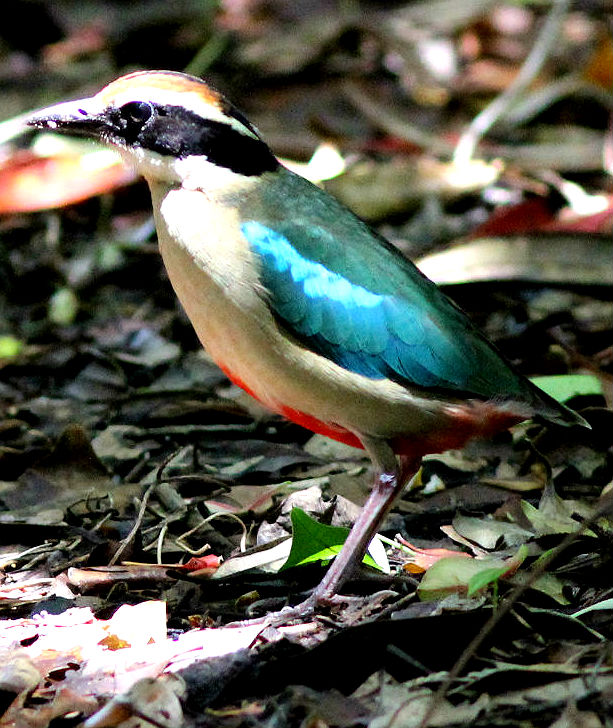 During winter the lake frequently supports flocks of waterfowl including Mallard, Eastern Spot-billed Duck, Eurasian Wigeon, Northern Pintail, Tufted Duck and Common Pochard and Eurasian Coot. Grebes are sometimes present and may include: Great Crested Grebe, Black-necked Grebe and Little Grebe. Mandarin Duck is an occasional winter visitor while the foremerly regular Baikal Teal is now a rare visitor.
During winter the lake frequently supports flocks of waterfowl including Mallard, Eastern Spot-billed Duck, Eurasian Wigeon, Northern Pintail, Tufted Duck and Common Pochard and Eurasian Coot. Grebes are sometimes present and may include: Great Crested Grebe, Black-necked Grebe and Little Grebe. Mandarin Duck is an occasional winter visitor while the foremerly regular Baikal Teal is now a rare visitor.
Overhead, watch for the ubiquitous Black-eared Kite, the occasional Western Osprey and, if you are very lucky, a Mountain Hawk Eagle, which is a scarce resident in the area.
A nighttime visit for owls can be productive, with Ural Owl and Northern Boobook both occurring here, and with chances of several species of mammal: Japanese Deer, Japanese Badger, Japanese Hare, Wild Boar, Tanuki and Japanese Giant Flying Squirrel.
Accommodation:
There are two hotspring inns in nearby Takaharu town: Gokuraku https://www.gokuraku-sanga.com/hajimeni.html and Yunomoto http://www.yunomoto.org.
In Kobayashi, another nearby town, there are business hotels and other accommodation possibilities, and there are many business hotels around Kagoshima Airport, which is about an hour away.
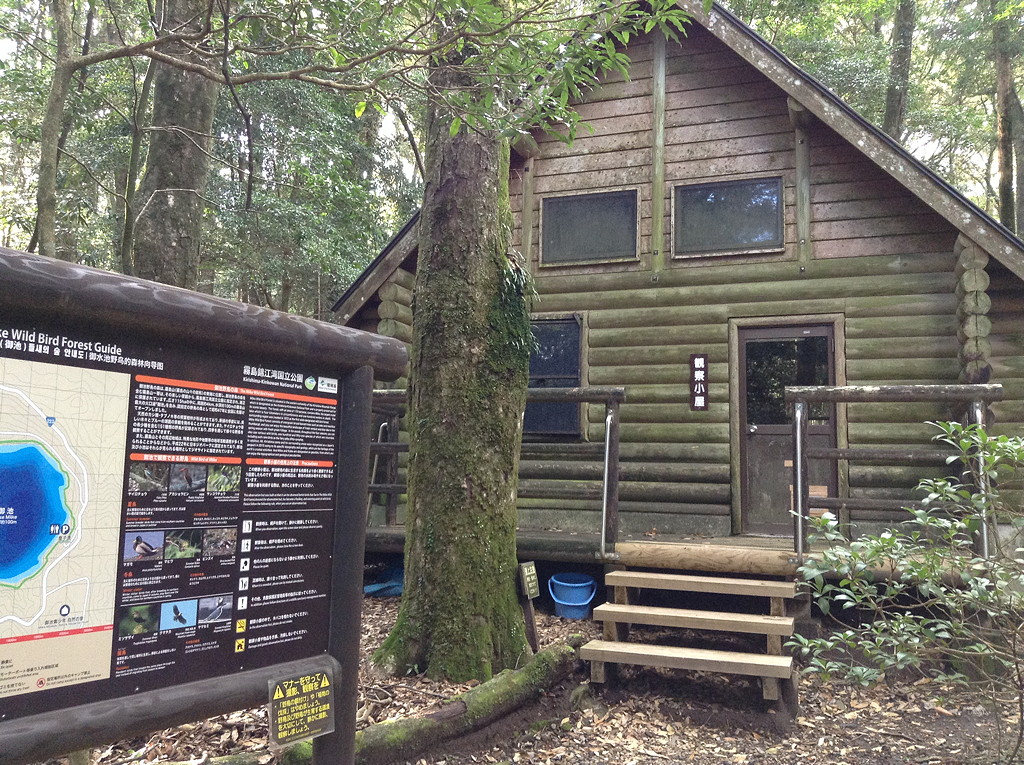 Right at Miike there is a camp site (Miike Camp Village) where cabins and tent accommodation can be arranged. Bookings are essential.
Right at Miike there is a camp site (Miike Camp Village) where cabins and tent accommodation can be arranged. Bookings are essential.
https://miike-camp-village.com
Tel: 0984-42-4038
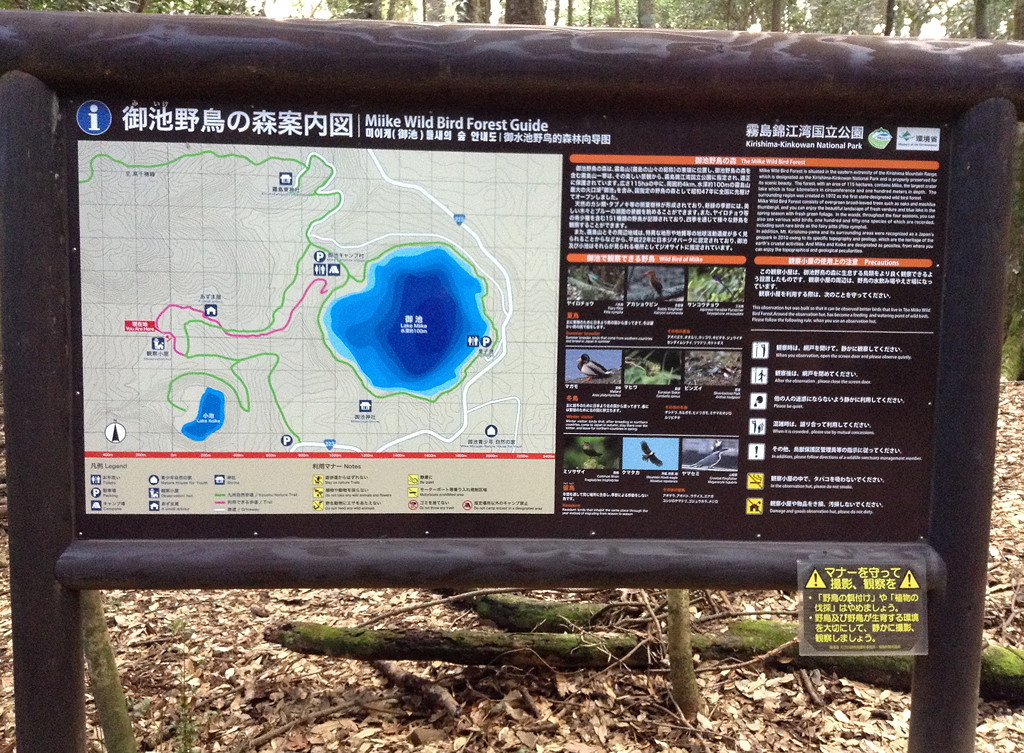
Miike Wild Bird Forest:
https://www.env.go.jp/en/nature/nps/park/guide/kirishima/recommend/08.html
© 2020 Mark Brazil & Chris Cook
Last updated: 20200525
